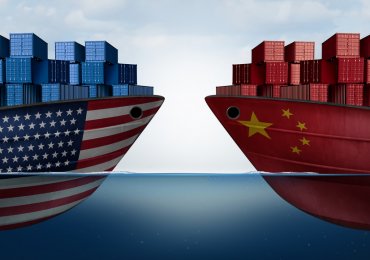U.S. suppliers of lubricants, lube additives and base oils are hoping that their government and China avoid an impending trade war but preparing to cope with Chinese tariffs on imports in case they dont.
China last week announced plans for 25 percent hikes on tariffs for lubricants and for lubricant additives not containing petroleum or extracted from bituminous minerals, in response to a U.S. announcement of tariffs on imports from China. Chinas increases have not been implemented yet, and some observers believe they wont be if the governments negotiate a resolution to their differences.

Photo: freshidea/Fotolia
If imposed, China’s proposed hikes on tariffs have the power to change shipping dynamics for bulk liquid cargoes.
China is not a large export market for U.S. suppliers of lubricants or raw materials for that industry, but neither are the volumes insignificant. In 2017, the U.S. exported 825,000 barrels of finished lubricants and base stocks to China, including Hong Kong, making it the 16th largest destination for those materials according to the U.S. Energy Information Agency. The volume was 848,000 barrels and 605,000 barrels in 2016 and 2017, respectively.
Suppliers contacted by Lube Report said they hope tariffs will be avoided but that they are proceeding to prepare contingencies in case they do.
We export a significant amount of product to Asia-Pacific, but only a portion of that is into China specifically. As a result, the tariffs may likely have some type of impact on our private-label customers, Lubricating Specialties Co. Vice President of Sales Tyler Jark said in an interview.
Chinas tariffs would apply to products that originate in the United States but not those that are manufactured by U.S. companies in other countries. LSC is headquartered in Pico Rivera, California, and has three blending plants in that state, but it also has two plants in Jamaica and theoretically could avoid tariffs by shipping from the latter location.
Traditionally, having Made in USA on a lubricant provides an image of higher quality and product reliability, Jark added. The question becomes whether or not this is enough to help overcome a higher cost.
U.S. companies said they believe their government has valid complaints about Chinese trade practices, but that they would prefer to solve them through means other than tariffs.
Hopefully, brinkmanship will take a back seat to a long-term agreement that recalibrates the economic relations between the two countries, including fixing some of the Chinese trade abuses ILMA members have cited in the past, Holly Alfano, CEO of the Independent Lubricant Manufacturers Association, said in a press release.
At this stage its far too early to see what implications there will be. Virtually anything could happen, said Adrian Brown, senior market analyst for SSY Shipbrokers, in an interview. These things have a habit of finding their own equilibrium.
Officials at ILMA, which is based in Washington, D.C., noted that both countries focused their levies away from consumer products.
By shielding U.S. consumers from the tariffs, the president and the Chinese government are putting U.S. manufacturers, including [Independent Lubricant Manufacturers Association] members – a group the president championed during the presidential campaign – in the cross hairs of a potential trade war, Jeffrey Leiter, ILMAs general counsel, told a reporter.
He suggested that lubricant manufacturers should take steps to prepare for a possible tariff increase. First, companies should look at the percentage of their sales in China compared to their overall business, and then consider how revenue and profits may shift. Next, companies should evaluate their supply chains to determine where interruptions might occur. Finally, they should develop a contingency plan.
On April 10 China filed a complaint against the U.S. with the World Trade Organization, claiming U.S President Donald Trumps tariff hike on imported steel and aluminum breaches international trade rules. The countries will have 60 days to attempt to resolve the issue. Both countries claim negotiations are underway in an effort to avoid a trade war.
Chinas tariffs cover $30 billion of trade. The U.S. tariffs cover $50 billion in trade and were announced after concluded that unfair regulations in China lead to the theft of technology patents and software from U.S. tech companies hoping to operate there.